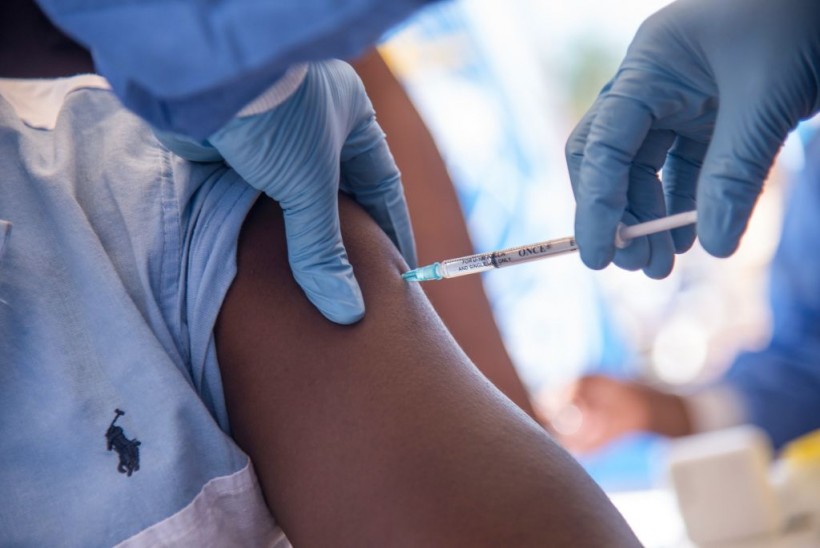Soligenix Inc. (SNGX), a late-stage biopharmaceutical company based in New Jersey, recently announced that its bivalent, thermostabilized vaccine protects non-human primates against the lethal Marburg marburgvirus, a type of virus from the Filoviridae family that causes hemorrhagic fever in humans and non-human primates.
The vaccine is formulated in a single vial and reconstituted with sterile water, Nasdaq reported. The company said that the recombinant subunit vaccine has previously demonstrated full protection against the Ebola virus Sudan ebolavirus (SUDV).

Nurses working with the WHO (World Health Organization) administer the Ebola vaccine to a local doctor at the town all of Mbandaka on May 21, 2018 during the launch of the Ebola vaccination campaign.
Marburg Virus Disease Explained
According to the Centers for Disease Control and Prevention (CDC), Marburg marburgvirus causes severe hemorrhagic fever called Marburg virus disease (MVD). The virus is a genetically unique zoonotic RNA virus of the filovirus family, which includes the Ebola virus (Zaire ebolavirus, and Sudan ebolavirus).
It was first detected in 1967 during an outbreak of hemorrhagic fever in Marburg and Frankfurt, Germany, and in Belgrade, Yugoslavia, now called Serbia. Around 31 people became ill from the virus. Most were laboratory workers at first, and then followed by several medical personnel and their family members.
Investigations reveal that the first people who contracted the virus were exposed to Ugandan imported African green monkeys or tissues they were studying. After the crossover of the virus, it was transmitted person-to-person via direct contact through broken skin or mucous membranes in the eyes, nose, or mouth.
Scientists identified the African fruit bat (Rousettus aegyptiacus) as the reservoir host of the Marburg virus. Infected bats do not show symptoms of illness, but primates who become infected may develop severe diseases and die.
ALSO READ: Ebola has been interacting with mammals for millions of years, study says
Vaccine Offers 100% Protection Against Lethal Marburg Virus Disease (MVD)
Soligenix, Inc.'s bivalent, thermostabilized vaccine demonstrated 100% protection against the lethal MVD in non-human primates, following the same 100% protection it had against another lethal filovirus SUDV.
According to Street Insider, it is an important milestone of an ongoing collaboration with the University of Hawaiʻi that shows the success of using one or more antigens within the same formulation without affecting its potency and thermostability.
Furthermore, it also demonstrates the broad application of heat-stable vaccine platforms and their role in the pandemic preparation of the US. It is the same heat-stable vaccine platform used to develop Soligenix's COVID-19 vaccine.
Scientists who developed the bivalent, thermostabilized filovirus vaccine used antigens that were previously effective in protecting non-human primates from subsequent infection, representing the only recombinant subunit vaccines demonstrating full protection against filoviruses.
Researchers noted that their current milestone shows that complete protection against filoviruses can be achieved with the thermostabilized formulation, even in a combined product.
Oreola Donini, Ph.D., Senior Vice President and Chief Scientific Officer of Soligenix, said that their combined vaccine platform includes a robust protein manufacturing process used in different protein antigens, a new nano-emulsion adjuvant that triggers broad immunity, and a formulation procedure that activates thermostabilization of the combined adjuvant and antigen in a single vial.
The ability to package more than one vaccine in one vial platform further adds to its developability as it can be used against MVD and SUDV where there are no currently available vaccines.
RELATED ARTICLE: Filoviridae Lloviu Virus Related to Ebola and Marburg Detected in Bats in Hungary: Should People Be Worried About It?
Check out more news and information on the Filovirus in Science Times.














